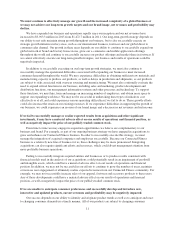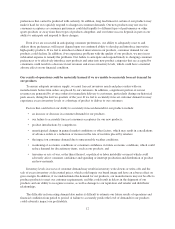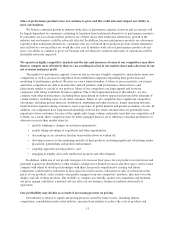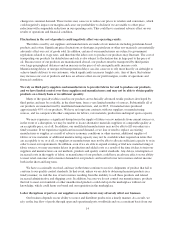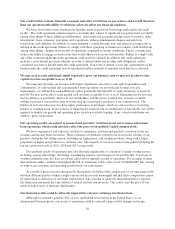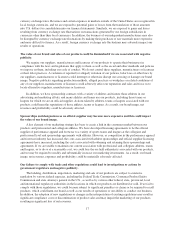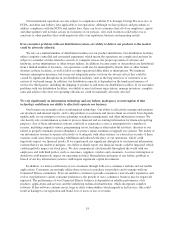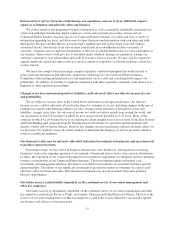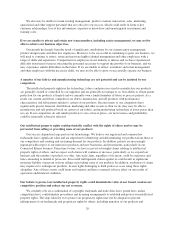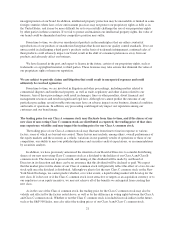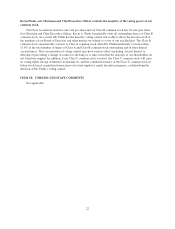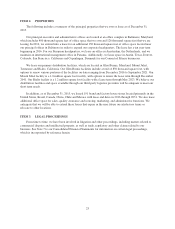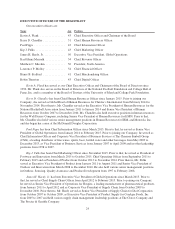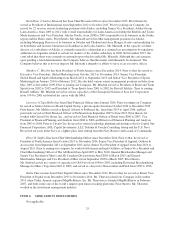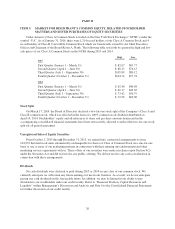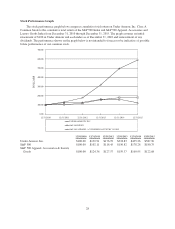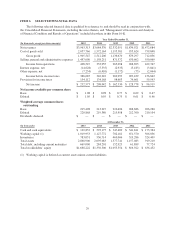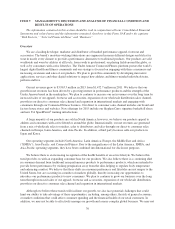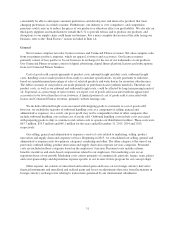Under Armour 2015 Annual Report Download - page 29
Download and view the complete annual report
Please find page 29 of the 2015 Under Armour annual report below. You can navigate through the pages in the report by either clicking on the pages listed below, or by using the keyword search tool below to find specific information within the annual report.misappropriation of our brand. In addition, intellectual property protection may be unavailable or limited in some
foreign countries where laws or law enforcement practices may not protect our proprietary rights as fully as in
the United States, and it may be more difficult for us to successfully challenge the use of our proprietary rights
by other parties in these countries. If we fail to protect and maintain our intellectual property rights, the value of
our brand could be diminished and our competitive position may suffer.
From time to time, we discover unauthorized products in the marketplace that are either counterfeit
reproductions of our products or unauthorized irregulars that do not meet our quality control standards. If we are
unsuccessful in challenging a third party’s products on the basis of trademark infringement, continued sales of
their products could adversely impact our brand, result in the shift of consumer preferences away from our
products and adversely affect our business.
We have licensed in the past, and expect to license in the future, certain of our proprietary rights, such as
trademarks or copyrighted material, to third parties. These licensees may take actions that diminish the value of
our proprietary rights or harm our reputation.
We are subject to periodic claims and litigation that could result in unexpected expenses and could
ultimately be resolved against us.
From time to time, we are involved in litigation and other proceedings, including matters related to
commercial disputes and intellectual property, as well as trade, regulatory and other claims related to our
business. Any of these proceedings could result in damages, fines or other penalties, divert financial and
management resources and result in significant legal fees. Although we cannot predict the outcome of any
particular proceeding, an unfavorable outcome may have an adverse impact on our business, financial condition
and results of operations. In addition, any proceeding could negatively impact our reputation among our
customers and our brand image.
The trading price for our Class A common stock may fluctuate from time to time, and if the shares of our
new class of non-voting Class C common stock are distributed as expected, the trading price of that class
may experience volatility and may impact the trading price for our Class A common stock.
The trading price of our Class A common stock may fluctuate from time to time in response to various
factors, some of which are beyond our control. These factors may include, among others, overall performance of
the equity markets and the economy as a whole, variations in our quarterly results of operations or those of our
competitors, our ability to meet our published guidance and securities analyst expectations, or recommendations
by securities analysts.
In addition, we have previously announced the intention of our Board of Directors to consider distributing
shares of our new non-voting Class C common stock as a dividend to the holders of our Class A and Class B
common stock. The decision to proceed with, and timing of, this dividend will be made by our Board of
Directors in its discretion and there can be no assurance that this dividend will be declared or paid. We expect
that the market price for the shares of our Class A common stock will generally reflect the effect of a two-for-one
stock split once the dividend is distributed. Although we plan to list the new Class C common stock on the New
York Stock Exchange, we cannot predict whether, or to what extent, a liquid trading market will develop for the
new class. If it does not or if the Class C common stock is not attractive to targets as an acquisition currency or to
our employees as an equity incentive, we may not achieve all of the benefits we anticipated from creating this
new class.
As in the case of the Class A common stock, the trading price for the Class C common stock may also be
volatile and affected by the factors noted above, as well as by the difference in voting rights between the Class A
and Class C common stock. Whether or not the Class C common stock is included in stock indices in the future,
such as the S&P 500 Index, may also affect the trading prices of our Class A and Class C common stock.
21


